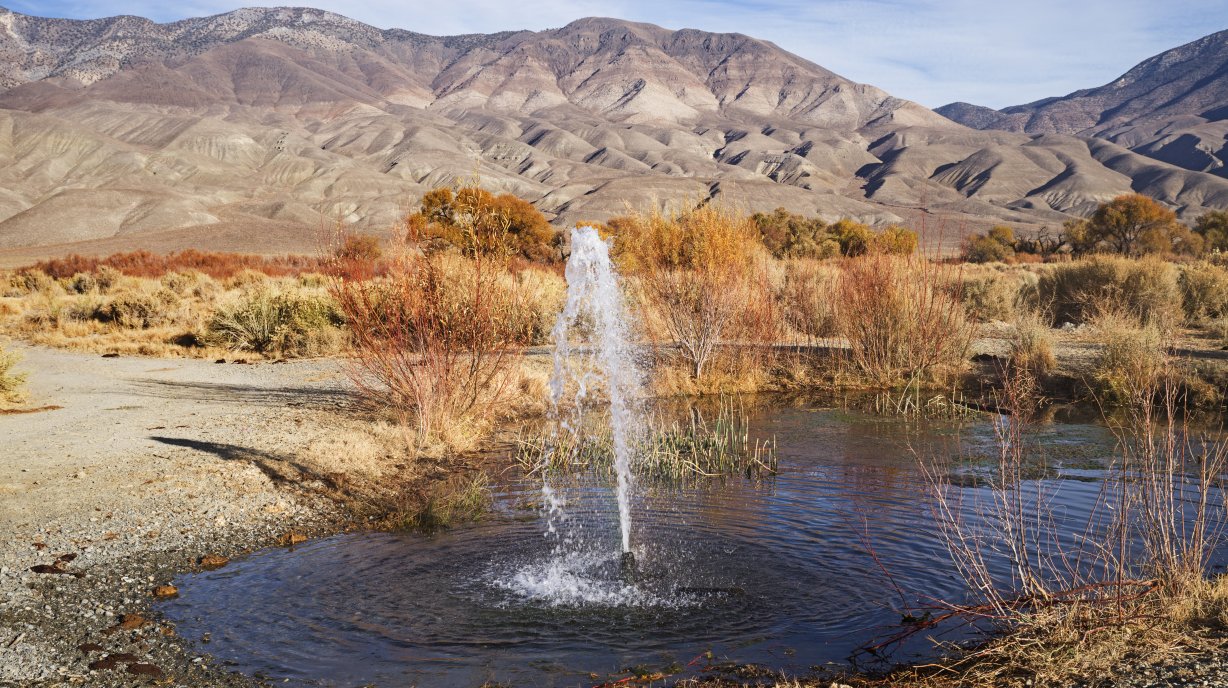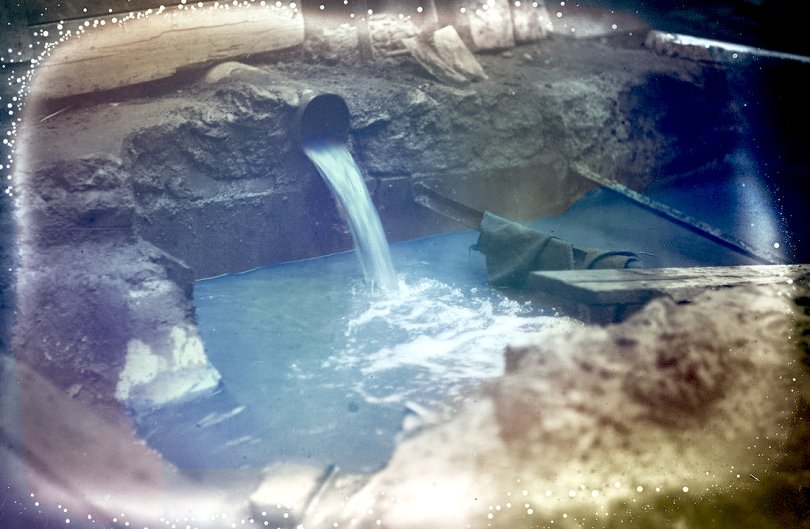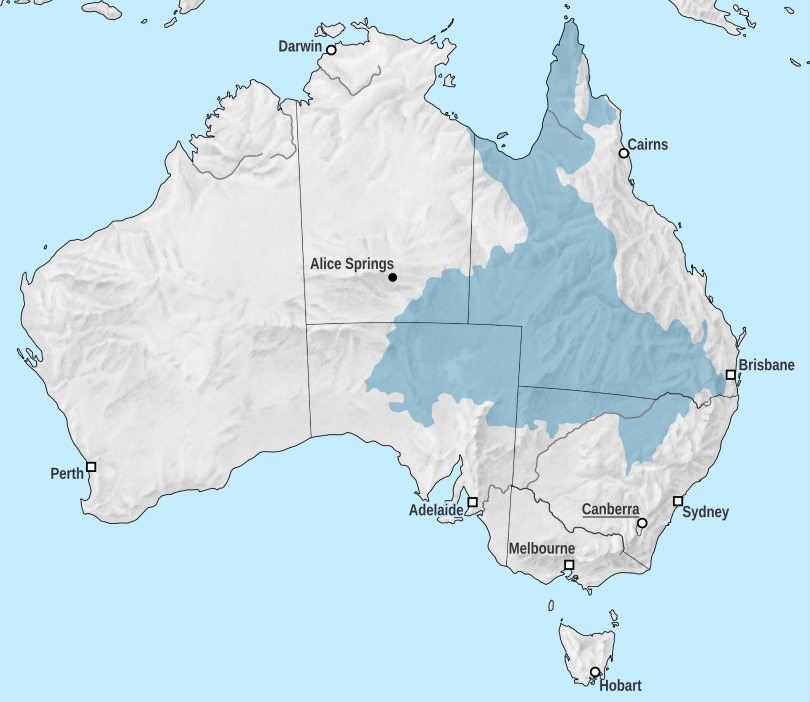
Health and environment

Picture by Tom on Adobe Stock
What do the Sahara Desert and Paris’ 16th arrondissement have in common? Both are located above a somewhat unusual water table: when you dig a hole in it, the water gushes out all on its own! The economists Hubert Stahn and Agnes Tomini examine this astonishing geological phenomenon in which the number of open wells does not impact the quantity of water in the water table, but rather the pressure that compresses its volume.
A deep-water diving champion in the Sahara during the nineteenth century? This was actually more common than we would think! In fact, many wells dug in the desert fill up all by themselves, and it is impossible to empty them. So, how are they maintained? Up until the mid-twentieth century, there was just one solution: holding your breath. This need created the profession of rhetassin, divers capable of holding their breath for five minutes or more and specialized in removing the sediment covering the bottom of these wells1. But why and how are these wells always full? The explanation is as geological as it is surprising: they are dug in an artesian aquifer.

Artesian well in Paris - Photo by Agence Roll Btv on gallica.bnf.fr / colorized
When we talk about a water table, we often think of it as a sort of cave filled with water—like an underground pool. In reality, the water is trapped within a porous (permeable) rock formation called an aquifer2. When this is surrounded by two layers of impermeable rock, it is called a confined aquifer. Some of these aquifers are renewable reserves because they retain recurrent sources of water, like rainwater. If the level of the water column that feeds the aquifer exceeds the level of the ground, the water under pressure will spurt out when a well is dug. This phenomenon was first observed in 1126 in Artois, a historic province of France. This is where the name “artesian aquifer” comes from. Wells that never empty and from which water naturally flows? This piqued the interests of the economists Hubert Stahn and Agnes Tomini.
Although the subject of groundwater is nothing new in economics3, most studies focus on the fact that these goods are non-excludable, but rivalrous. This means that someone cannot prevent others from drawing water, though drawing it themselves impacts the reserves available for others. Today, groundwater makes up 99% of the Earth’s freshwater reserves, and it accounts for half of the world’s drinking water and approximately a quarter of all water used4. Among the many threats to groundwater, overexploitation is particularly worrying. This leads us to think about optimizing the way we exploit this resource. How can we extract as much water as possible while still persevering it for future generations?
Water renewal is continuous in artesian aquifers. Digging a second well will not lower the water level. Researchers are therefore examining the place of these aquifers within economic models.
In order to understand the economics of artesian aquifers, we must first understand how they work. Hubert Stahn and Agnes Tomini therefore dove deep into books on physics and hydraulics and discovered that the pressure of the water outflow depends on the height of the water column, the diameter of the wells, and gravity. These three elements allowed them to estimate the amount of water that will come out of a well. While digging another well does not directly affect the quantity of the first well, it will still create what the economists call pressure externality. This means that the pressure of the first well decreases when a second is dug. It corresponds to the classic model of resource competition. Several users of an artesian aquifer therefore compete for access to a resource (which is, in this case, pressure). This observation led the economists to think about its optimal management.
The researchers used calculations of the pressure drop brought about by a new well to figure out how many wells would be needed to extract the maximum amount of water while also preserving its outflow. They compared this to a situation where private ownership of the land makes each agent “myopic” (an agent who wants to maximize their personal profits without realizing the impact this may have on their neighbors or future generations). Not surprisingly, myopic agents tend to overexploit the resource. In this case, the pressure of the water might become so low that pumps would need to be constructed. Obviously, this situation would be far from optimal, as is so often the case in natural resource economics. But how do agents behave in reality?

Great Australian Artesian Basin - Image by Tentotwo sur Wikimedia Commons
Because groundwater resources are incredibly important, they are often highly regulated by governments, who have every reason to ensure they are optimally exploited. These wells’ physical and hydraulic data is sometimes precise enough that countries have an in-depth understanding of the resource’s conditions and can therefore avoid becoming myopic agents. For example, in France, you can dig a well in your yard, but you must declare it to the competent authorities and make sure you are not living too close to a potential source of pollution which could contaminate the water5.
Artesian aquifers are just as regulated (sometimes even more), but there are a lot less that exist. The largest are the Great Artesian Basin, which stretches over 1,700,000 square kilometers of eastern Australia and the Albian Aquifer—also known as the North Western Sahara Aquifer System (NWSAS)—which supplies oases and the wells in which rhetassin dove. This aquifer had been considered a fossil (non-renewable) resource up until 2013, when Geophysical Research Letters published a study on the groundwater system6. Contrary to popular belief, this study shows that the aquifer is partly artesian and fills up with rain. This would be pretty good news if the renewal rate was not 40% of its exploitation, which is far from optimal. In March 2022, the UN published a report about the threats to groundwater (pollution, global warming, overexploitation) and encouraged its sustainable exploitation7. So, in theory, artesian aquifers are an endless source of water...but until when?